Last updated on March 3rd, 2024 at 12:07 pm
Decorating your home with plants during the holidays adds a special touch. One plant we love is the Christmas cactus! Caring for a Christmas cactus is a delightful way to enhance your festive decor.
There are three holiday cactus plants: the Thanksgiving cactus, the Easter cactus, and the Christmas cactus. Among them, the Christmas cactus stands out for its beauty during winter.
Alfred Palomares, a plant expert from 1-800-Flowers.com, says, “This plant comes in different colors like red, orange, purple, white, and pink. It’s perfect for brightening up your home not only during the holidays but all year round.” Taking care of it indoors is easy, and if you do it right, it can keep blooming for many years. “It can even live for up to 20 years,” Palomares adds. “And it’s safe around pets, too!”
The Christmas cactus is a wonderful addition to your home, bringing joy with its colorful blooms. It’s simple to care for and lasts way beyond the holiday season, making it a lovely choice for any plant lover.
Here are some simple yet effective tips on how to care for your Christmas cactus, ensuring it remains healthy and continues to dazzle with its blooms throughout the year.
Contents
- 1 Light For The Care Of Christmas Cactus
- 2 Water For The Care Of Christmas Cactus
- 3 Soil For The Care Of Christmas Cactus
- 4 Temperature For The Care Of Christmas Cactus
- 5 Fertilizer For The Care Of Christmas Cactus
- 6 Tips for Encouraging Blooming
- 7 Pruning and Maintenance
- 8 Repotting Of the Christmas Cactus: Timing and Frequency
- 9 Propagation of Christmas Cactus
- 10 FAQS
- 11 Author
Light For The Care Of Christmas Cactus
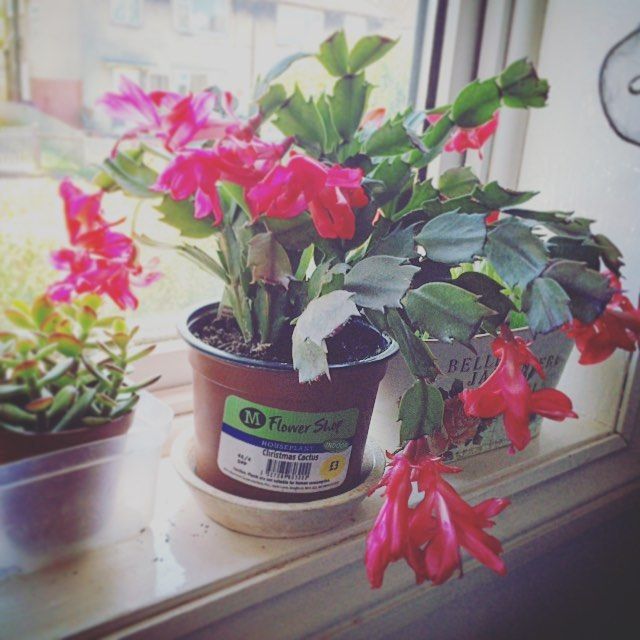
Image credit:tabitha_siddle
Proper care for a Christmas cactus involves providing moderate light, ideally 4 to 6 hours of indirect sunlight, particularly during its winter blooming phase. While these cacti thrive in bright, indirect sunlight, maintaining a balance without subjecting them to extreme light conditions is essential. They adapt well to partial shade or filtered light, showcasing their flexibility in various light settings.
Placing them near a window during winter allows them to absorb ample sunlight without direct exposure to harsh rays. However, in the summer, protecting them from intense sunlight is crucial to prevent leaf scorching. Hence, finding a location with filtered or partial sunlight becomes vital to ensure the well-being of your Christmas cactus during warmer months.
Water For The Care Of Christmas Cactus
Proper watering is an essential factor in the care of a Christmas cactus. Striking the right balance is crucial—never let the soil become bone dry or allow it to become overly soggy. Aim to maintain a slightly moist soil condition, watering only when the top inch feels dry to the touch. In the winter, when the plant’s growth slows down, adjust the watering frequency, allowing the soil to dry slightly more between waterings.
During the flowering period in winter, consistent and adequate watering is essential to support the vibrant blooms. Conversely, in the summer months when the plant is actively growing, increase the watering frequency, ensuring the soil stays slightly moist, but take care to avoid waterlogging. However, once the flowering phase concludes, whether in winter or summer, it’s prudent to slightly reduce the watering frequency while still ensuring the plant receives adequate moisture.
Soil For The Care Of Christmas Cactus
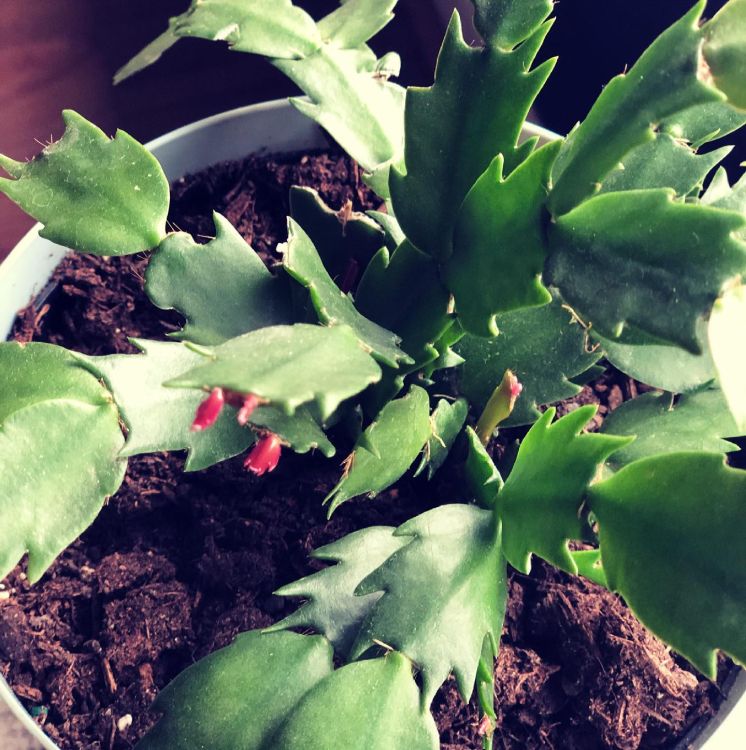
Image credit:crystalizedwellness
When it’s time to ensure proper care for your Christmas cactus, it’s important to select a soil mix specifically designed for cacti and succulents, ensuring it has excellent drainage properties. An ideal mix typically combines components such as coarse sand, perlite, and well-aerated potting soil or a specialized cactus mix. Including peat moss in the soil blend can be beneficial, particularly if you aim to create a more acidic environment conducive to the plant’s growth.
Repotting the Christmas cactus every 2-3 years, preferably after its blooming period, is recommended to provide ample space for healthy development. Choosing pots with adequate drainage holes is essential to prevent water accumulation, which can lead to root rot—an issue that jeopardizes the vitality and overall health of the Christmas cactus.
Temperature For The Care Of Christmas Cactus
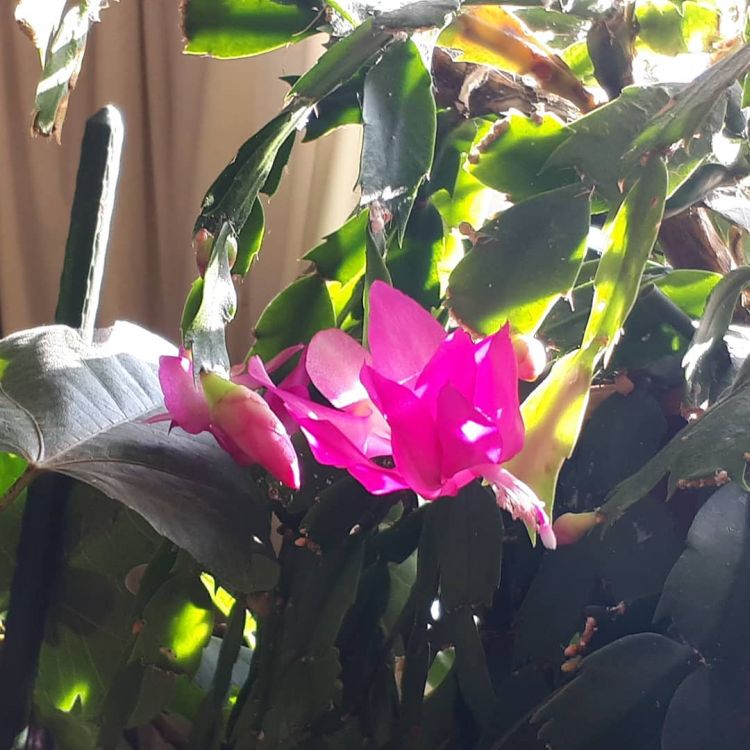
Image credit:canawati
Ensuring ideal conditions for the care of a Christmas cactus involves considering various temperature and humidity factors. During its peak growth months from April to September, the plant thrives in temperatures ranging between 21-27°C. However, once the buds form, they prefer lower nighttime temperatures around 13-18°C and require a substantial period of darkness—approximately 13 hours—to stimulate blooming.
In addition to temperature considerations, maintaining adequate humidity levels is essential, especially when the plant resides indoors in dry, heated environments during the winter months. Mimicking its natural tropical habitat can be achieved by occasional misting or placing the plant on a tray filled with pebbles and water to boost humidity levels.
It’s crucial to avoid subjecting the Christmas cactus to sudden temperature fluctuations. Aim for a moderate temperature range and avoid placing it in drafty areas or near heaters, as exposure to these stressors can cause bud or flower drops.
Fertilizer For The Care Of Christmas Cactus
Fertilizer is very necessary for the care of a Christmas cactus, so feed them with a balanced fertilizer mixed with half-strength. Apply this fertilizer after one and a half months during its growing season, which typically spans spring and summer. This routine helps encourage healthy growth and promotes blooming, ensuring your plant thrives during its active periods.
Tips for Encouraging Blooming
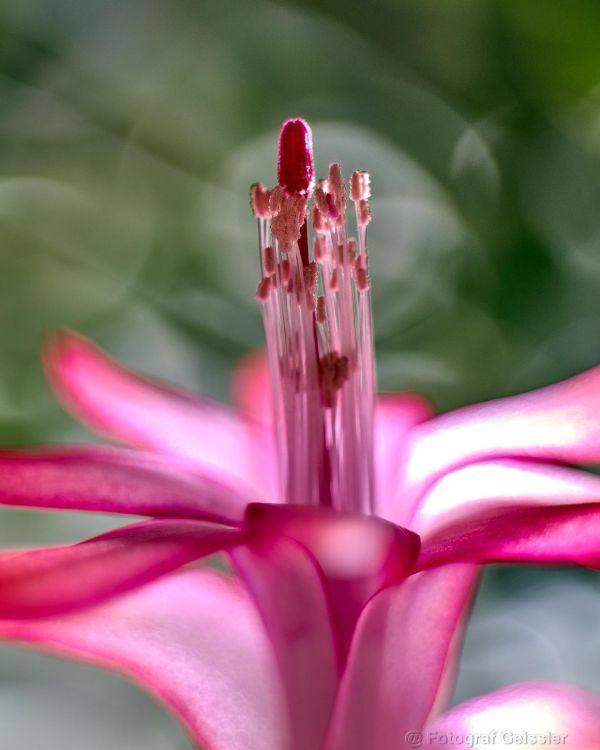
Image credit:fotografgeissler
After the Christmas cactus finishes blooming, it’s beneficial to maintain a cooler environment, aiming for temperatures around 50 degrees Fahrenheit. During this period, ensure the soil stays slightly moist without overwatering and avoid applying any fertilizer. As new growth emerges, a strategic approach can be taken to stimulate blooming: transfer the plants to a setting with temperatures between 55 and 65 degrees Fahrenheit. Implement a specific light schedule of 10 hours of light exposure followed by 14 hours of darkness for four to six weeks once the new growth becomes visible.
Delay watering until the start of October and then gradually resume weekly watering sessions as soon as the buds start forming, continuing until the flowering cycle ends. To aid in bud development and throughout the flowering season, consider misting the plant every few days. Once the flowering stops, around January, adjust the watering routine to twice a month for the rest of the winter to prevent excessive moisture.
Upon the appearance of buds, reintroduce the plant to warmer temperatures and resume regular care routines as previously maintained. Typically, the plants should start displaying blooms within six weeks.
Pruning and Maintenance
Pruning helps maintain a compact shape and encourages branching. You can pinch or prune off segments of the plant in spring or early summer, and these cuttings can be used to propagate new plants.
Repotting Of the Christmas Cactus: Timing and Frequency
Christmas cacti thrive when slightly rootbound and do not require frequent repotting. It’s typically recommended to repot them every 3 to 4 years, or when the plant shows signs of distress, such as looking unkempt, or when numerous roots start emerging from the drainage holes. Excessive repotting can harm the plant and potentially disrupt its blooming cycle.
Contrary to the repotting timelines of some other plants, Christmas cacti have a unique schedule. It’s advised to wait until the blooming period concludes and the flowers start to wilt, usually at the end of the winter or early spring, before considering repotting. Avoid repotting the plant while it is actively blooming, as this can cause undue stress. By adhering to this timing and infrequent repotting schedule, you can ensure the continued health and prolific blooming of your Christmas cactus.
Propagation of Christmas Cactus
An ideal period for propagating a Christmas cactus is about 1 to 2 months following the end of its blooming phase. It’s crucial to refrain from propagation during the fall, especially when the plant is setting buds or actively flowering. Using cuttings from the Christmas cactus—whether large or small—contributes to the fuller growth and bushier appearance of the original plant, ultimately leading to increased blooming potential in subsequent flowering cycles. Propagation of the Christmas cactus can be achieved through stem cuttings or seeds, both viable methods for expanding your plant collection or enhancing the lushness of the existing specimen.
FAQS
How long can a Christmas cactus live?
With proper care, a Christmas cactus can live almost 20 years, showcasing its vibrant blooms year after year.
How can I encourage my Christmas cactus to bloom more?
To stimulate blooming, expose the plant to cooler temperatures around 50°F following its blooming phase. Also, consider adjusting the light exposure and darkness duration for about four to six weeks when new growth appears.
What’s the best soil mix for a Christmas cactus?
Use a well-draining soil mix formulated for cacti and succulents. A blend that includes components like coarse sand, perlite, and well-aerated potting soil, possibly with added peat moss for acidity, works well.
Is it necessary to frequently repot my Christmas cactus?
Christmas cacti prefer being slightly rootbound and do not require frequent repotting. Repot every 3 to 4 years or if the plant appears distressed or exhibits extensive root growth through the drainage holes.
Is it possible to propagate a Christmas cactus using stem cuttings or seeds?
Yes, you can propagate a Christmas cactus using both stem cuttings and seeds. Taking cuttings contributes to a fuller plant while growing from seeds can expand your collection.
In conclusion, tending to a Christmas cactus offers a rewarding way to brighten your home with its stunning blooms. By providing the right care—appropriate lighting, balanced watering, and understanding its blooming cycle—this resilient plant can bring joy not just during the holidays but throughout the year. Following these care tips ensures a thriving and vibrant Christmas cactus that adds a touch of enchantment to your home decor, becoming a beloved part of your plant collection for years to come.

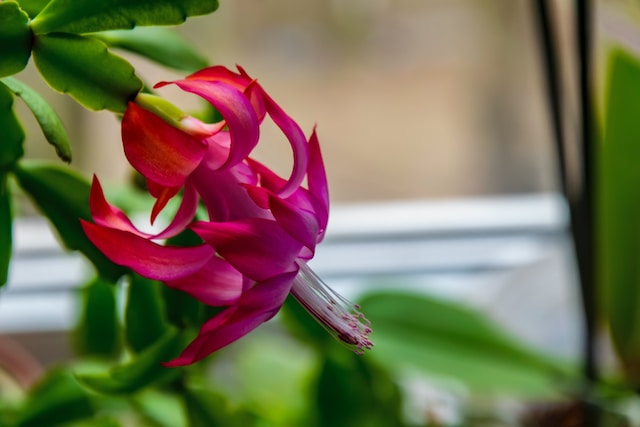
4 thoughts on “How to Care for a Christmas Cactus”